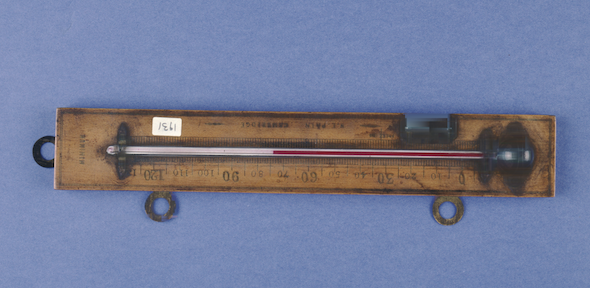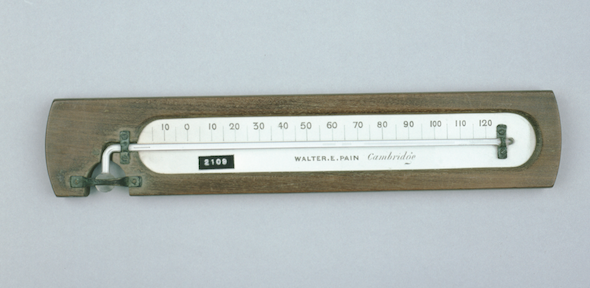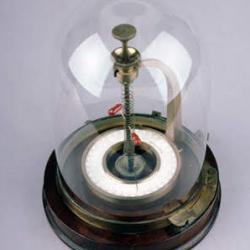In 1790, Professor Daniel Rutherford (1749-1819) invented maximum and minimum thermometers as a way of recording the highest and lowest temperature recorded over a certain timespan. Both instruments were simple bulb thermometers set, one above another, on a single frame.
An ivory index inside the thermometer tube marked the highest or lowest level of the liquids. In the case of the minimum thermometer, spirit was used, and for the maximum gauge mercury was employed. Rutherford's design was soon improved, as mercury tended to leak beyond the maximum index. A blued steel index in the shape of a dumbbell replaced the original ivory marker.






